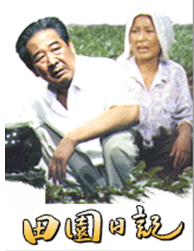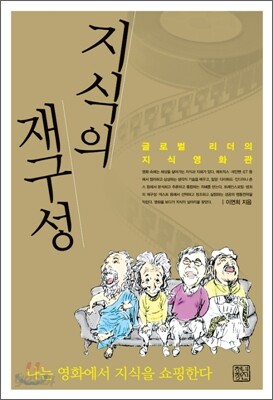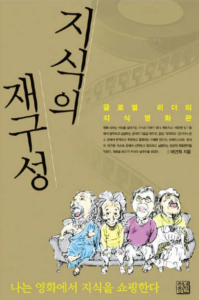Go to Korean Version
Explore the Table of Contents
The longest-running TV drama in South Korea is ‘Country Diaries(전원일기, 田園日記)’, which aired for 22 years and 2 months. The story unfolds in the small, unmarked village of Yangchon-ri, where Chairman Kim (Choi Bul-am) and Il-yong (Kim Su-mi), along with a few simple villagers, build their lives, spanning 1,088 episodes. The drama is cherished for portraying family love, tight bonds between neighbors, and the nostalgic scent of the hometown.

The American equivalent to this Country Diaries is ‘Little House on the Prairie’, which continued for ten years from 1974. In the early 1980s, it was also broadcast in South Korea. Little House on the Prairie is set in the late 19th-century American Midwest plains, depicting the life of a poor but loving family. In terms of content and message, it stands up to our Country Diaries.

The writer of this drama, Laura Ingalls Wilder, published as her first work well into her sixties. As I find myself reaching the age she was when creating, I reflect on my growth while watching these two dramas.
Despite lacking the courage to venture into new creative writing, I find solace in revisiting and organizing my past works. My book, “The Reconstruction of Knowledge,” is precisely that—a reconfiguration of insights gleaned from approximately 30 films and 88 books. Below is the publisher’s introduction to the book, which I offer in lieu of a formal preface to provide a glimpse into its essence.


A comprehensive self-development integrated theory encompassing philosophy, literature, humanities, economics, management, physics, biology, chemistry, statistics, neuroscience, education, sociology, ethics, history, futurology, and more. Unlike school exams that are subject-specific, life’s exams encompass all subjects, requiring integrated knowledge. Thus, the wisdom we seek should be holistic and universal. Ultimately, what we seek is not ‘what’ but ‘how.’
To be more specific, the answers to “How to think, How to see, How to act?” are the future knowledge and wisdom we seek in life. These answers can be found in ‘knowing oneself (知己),’ ‘knowing others (知彼),’ and ‘knowing oneself and others (知彼知己).’ Aligning our thoughts with our abilities [知己], viewing the world through the principles of nature [知彼], and acting in accordance with the world [知彼知己] are crucial. The strategies and principles in this book are about increasing the probability of success in the world.
Why did Aristotle, Einstein, Bill Gates, and Confucius go to the cinema?
to shop for knowledge in movies!
This book reconstructs isolated pieces of knowledge into creative wisdom for living in the world. Over 30 movies are used as tools to extract various knowledge in natural sciences, social sciences, and humanities. The knowledge and information stored with movies can be easily retrieved through the brain’s associative processes anytime, anywhere.
In movies like ‘Rain Man,’ where a protagonist with autism appears, we glimpse the remarkable functions and memory of the human brain along with sibling love. Watching the protagonist in ‘Patch Adams’ piece together lost memory fragments reveals the power of memory networks in recalling information stored in the brain. The protagonist in ‘Forrest Gump’ teaches us the principles of success embedded in simplicity. Moreover, we grasp decision-making methods and economic principles prioritizing rationality. All of these represent what the author calls ‘knowing oneself (知己)’ and provide answers to “How to think.”
Characters in movies like ‘Milyang’ and ‘Idaho’ express that “everyone lives the same way” and “the paths in the world are all different,” respectively, representing perspectives on the complex world. Determining whose words are more valid requires judgment based on knowledge in philosophy, chemistry, physics, management, and more. However, this book only highlights a few laws applicable in human society. It emphasizes the importance of imagination and the ability to view truth and falsehood from various perspectives. This is ‘knowing others (知彼),’ providing an answer to “How to see.”
Lastly, the book illustrates the process of reaching the ultimate goal of ‘knowing oneself and others (知彼知己)’ through methods such as choice, abandonment, imitation, storytelling, symbiosis, and execution. The commonality among all successful individuals in the world is that they consistently practiced whatever they chose to do. The resulting change in oneself and the world is undeniable. Movies like ‘The Reconstruction of Crime,’ ‘Trainspotting,’ ‘Next,’ ‘Hwansanbul,’ ‘A Beautiful Mind,’ ‘Big Fish,’ ‘A Walk in the Clouds,’ ‘It’s a Wonderful Life,’ and more were chosen to explain this fact.
The knowledge extracted from over 30 movies and 88 books is invaluable. The reconstruction of all this knowledge results in the wisdom of life. While it may seem lengthy and complex when laid out in a single line, it can indeed be unified. Complexity transforms into simplicity when everything is simplified and generalized. This newfound wisdom is the essence of living in the world and the principles of life.

답글 남기기